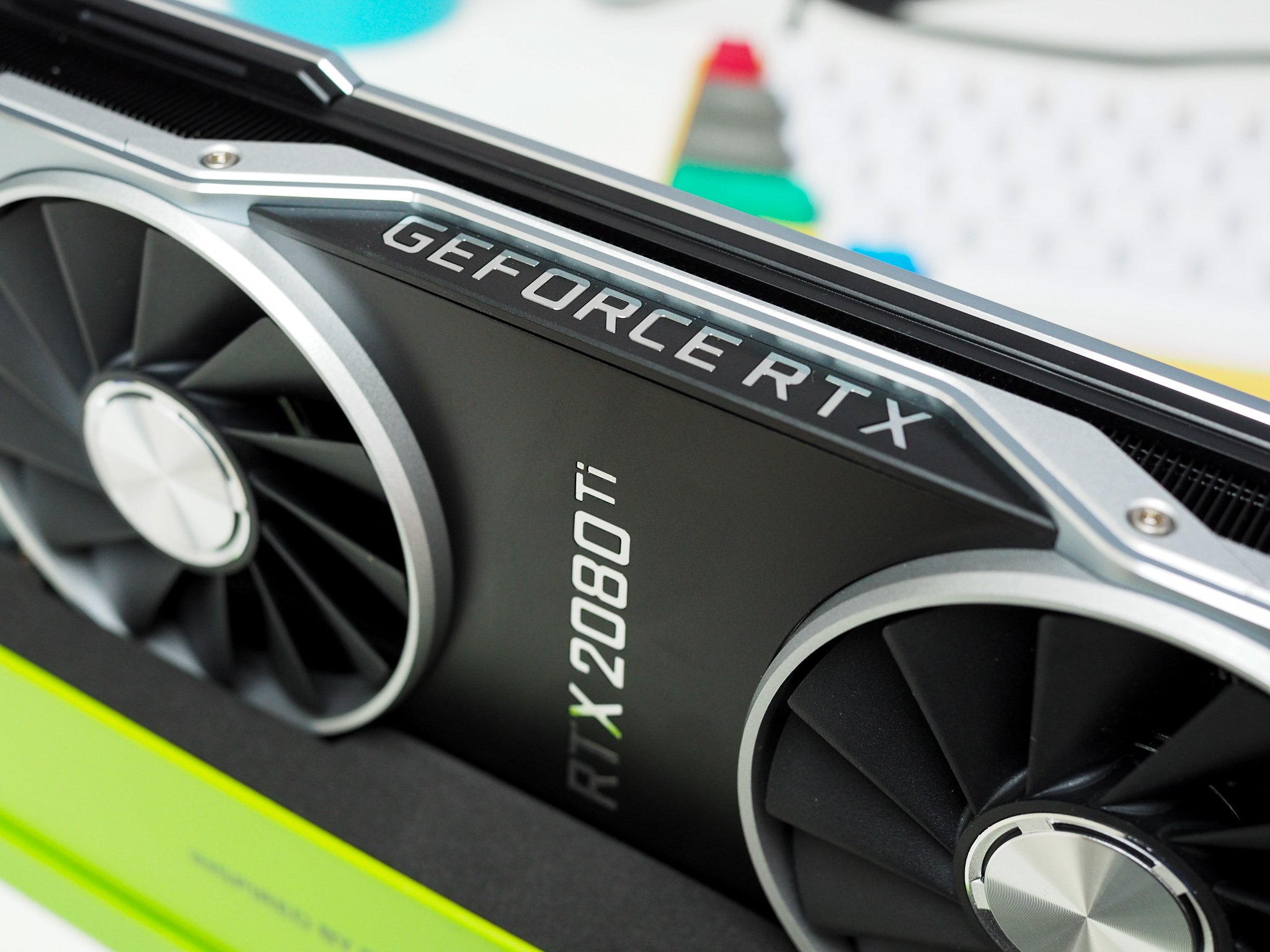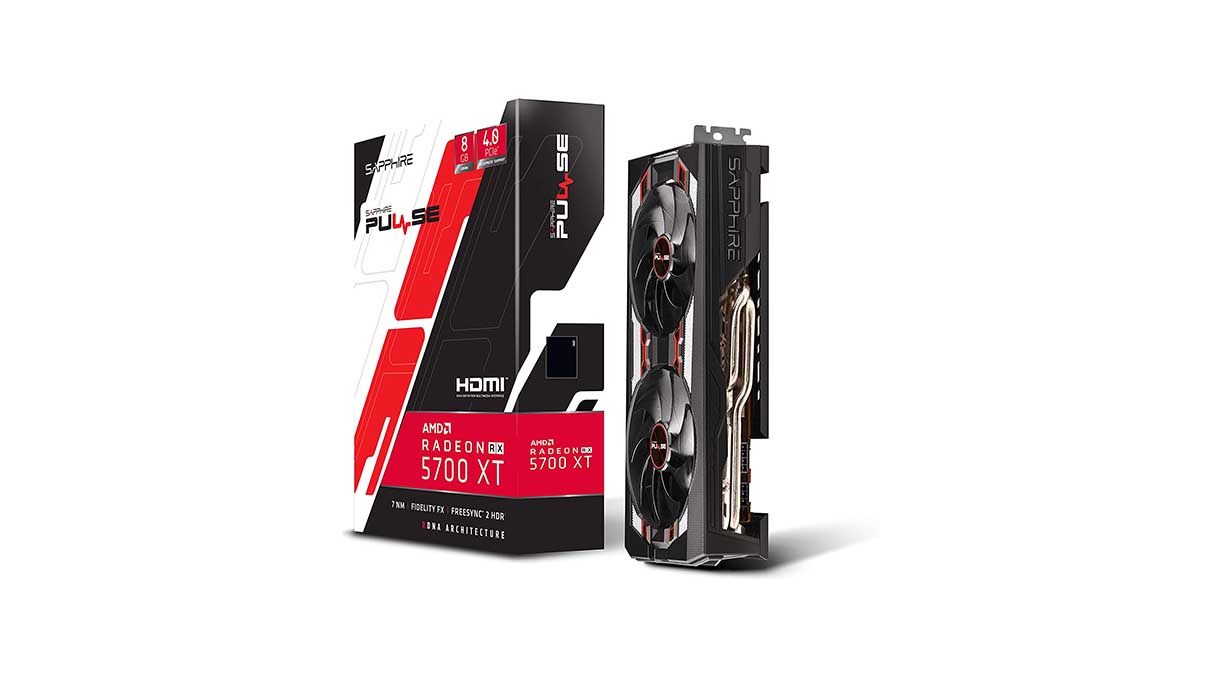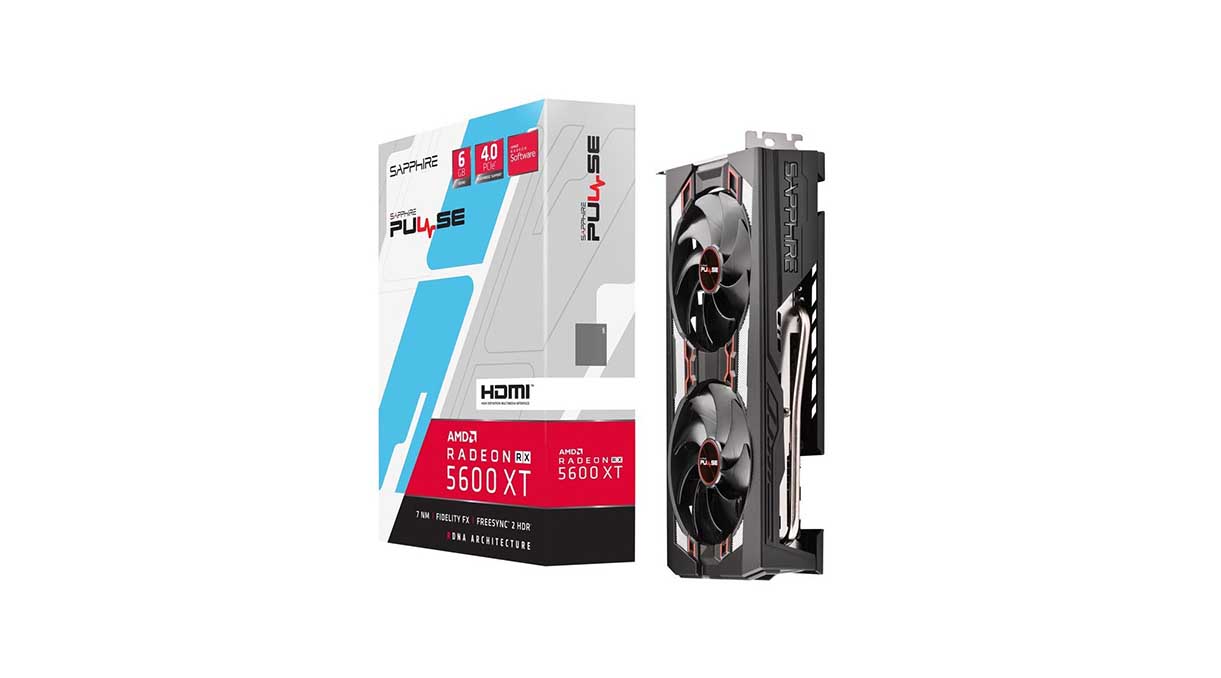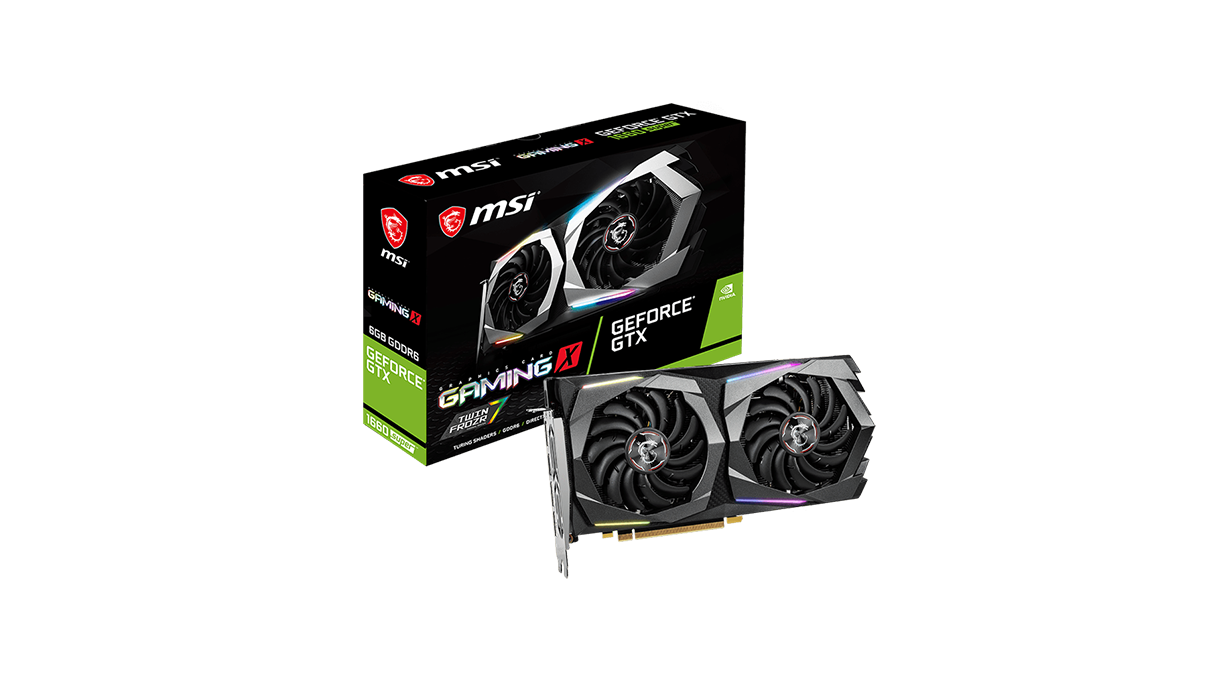Not just any old PC can run VR — whether you're looking at Oculus Rift S, HTC Vive, Vive Pro, Valve Index, or the Windows Mixed Reality headsets — and you might be wondering about a graphics card for VR upgrade to get your PC up to snuff. While the AMD Radeon RX 5700 XT is likely the best bet for most people due to its performance-to-price ratio, we've rounded up a bunch of options here that fit different budgets and needs.
Best For Most People: AMD Radeon RX 5700 XT
AMD's Radeon RX 5700 XT is one of its new GPUs based on its 7nm Navi architecture, bringing the performance you need for smooth VR at a reasonable price. That's especially important when you've invested (or are looking to invest) in a rather expensive VR headset. It's also one of the overall best graphics cards you can buy today.
This GPU will power any VR headset available now, with high frame rates for essentially any game or VR experience. It has 8GB of GDDR6 VRAM, 448GB/s memory bandwidth, a 256-bit memory bus, and a boost clock up to 1,925MHz. When you're not enjoying a high-quality VR experience, the RX 5700 XT will also be able to deliver smooth gaming at 1440p (QHD) and can even dabble in 4K.
You won't get some of the same benefits of NVIDIA RTX cards like ray tracing and DLSS 2.0. Still, you will get to take advantage of FreeSync 2 variable refresh rate technology to reduce tearing on compatible monitors. The Sapphire Pulse version that we recommend includes dual fans as well as three HDMI ports and one DisplayPort.
Pros:
- Excellent performance-to-price ratio
- Will power any VR headset
- Power for smooth 1440p gaming
- HDMI and DisplayPort connections
- AMD FreeSync tech
Cons:
- Won't have enough juice for power users
- Lacks some of NVIDIA's RTX features
Best Overall
Sapphire Pulse RX 5700 XT
Save some dough
A complete VR setup isn't cheap, but AMD's RX 5700 XT can save you money and still deliver a high-quality experience with any modern VR headset.
Runner-Up: NVIDIA GeForce RTX 2070 Super
If you'd like to land about the same performance as the AMD RX 5700 XT but also want to take advantage of NVIDIA RTX features like ray tracing and DLSS 2.0 when gaming on a standard monitor, the RTX 2070 Super should make a great choice. It does cost quite a bit more, but it is a stellar graphics card for VR. You shouldn't have any issues powering modern VR headsets and their games and experiences.
The Founders Edition version of the RTX 2070 Super that we recommend includes 8GB of GDDR6 VRAM, 448GB/s memory bandwidth, a 256-bit memory bus, and a boost clock speed up to 1,770MHz. It is based on a 12nm process, but it's about as efficient as AMD's 7nm cards.
When not enjoying high-quality VR experiences, the RTX 2070 Super will easily handle QHD monitors at a high framerate for even modern AAA games. It will also be able to hit the low end of 4K, though, for true 4K, you might want to check out something like the RTX 2080 Ti. Add a G-Sync monitor for less stuttering and screen-tearing when not in VR.
Pros:
- Will deliver a high-quality VR experience
- Ray tracing and DLSS 2.0 for 2D gaming
- Power for smooth 1440p gaming
- DisplayPort and HDMI connection
- NVIDIA G-Sync tech
Cons:
- More expensive than AMD hardware
- Still not the top in terms of performance
Runner-Up
NVIDIA RTX 2070 Super Founders Edition
Great GPU with RTX benefits
The RTX 2070 Super will likely slightly edge out the RX 5700 XT, though it does come at a higher price. Ultimately, you'll enjoy a quality VR experience on any headset.
Best Mid Range: AMD Radeon RX 5600 XT
Getting into mid-range best graphics cards for VR, AMD's RX 5600 XT is an excellent option that rivals NVIDIA's RTX 2060 Super in terms of raw performance. It doesn't include RTX benefits like ray tracing and DLSS 2.0, but it does come at a more affordable price. If you're not concerned with pushing the upper limits of modern VR headsets but still want a great experience, this card should be a great addition to your PC.
The Sapphire Pulse version we recommend includes 6GB of GDDR6 VRAM, 336GB/s memory bandwidth, a 192-bit memory bus, and a boost clock speed up to 1,750MHz. When not enjoying VR, this GPU will be able to handle 1440p on a standard monitor, though it's better to cut out to deliver a top-tier 1080p experience.
Pros:
- Will power any modern VR headset
- Excellent value
- Suitable for standard 1080p or 1440p gaming
- Includes HDMI and DisplayPort
- AMD FreeSync tech
Cons:
- No extra RTX benefits
Best Mid Range
Sapphire Pulse RX 5600 XT
Quality VR for less
If you're not concerned with pushing the upper limits of VR, the RX 5600 XT will still deliver a smooth gaming experience at a great price.
Best Entry Level: NVIDIA GeForce GTX 1660 Super
Quality sub-$300 graphics cards for VR include NVIDIA's GTX 1660 Super. It's still based on the same Turing architecture as the modern RTX cards, though it doesn't offer dedicated ray-tracing cores or DLSS 2.0 for standard gaming. In any case, it's still going to deliver a quality VR experience for most games and headsets, if at reduced quality or frame rates.
The MSI Gaming X version we recommend includes 6GB of GDDR6 VRAM, 336GB/s memory bandwidth, a 192-bit memory bus, and a boost clock speed up to 1,830MHz. Those are rather impressive numbers for the price these cards cost, and they run at a rather efficient 125W. When not enjoying VR, the GTX 1660 Super will power smooth 1080p gaming on a monitor. NVIDIA G-Sync tech helps cut down on tearing and stuttering.
Pros:
- Attractive price
- Uses Turing architecture
- Powerful enough for quality VR
- NVIDIA G-Sync tech
- Smooth 1080p performance on standard monitor
Cons:
- No dedicated ray-tracing cores or DLSS 2.0
- Not for those concerned with top-tier VR
Best Entry Level
MSI Gaming X GTX 1660 Super
The right card for a budget build
The GTX 1660 Super doesn't offer features like dedicated ray-tracing cores and DLSS 2.0, but it's still a card that will fit well in a budget VR PC build.
Best Overkill: Gigabyte RTX 2080 Ti
Let's say you have deep pockets and can shell out more than $1,000 for a GPU. The RTX 2080 Ti immediately comes to mind, considering it offers ridiculous performance, which VR enthusiasts can take advantage of. No matter the VR headset and no matter the game or app you want to enjoy, this GPU, with its 11GB of GDDR6 VRAM, boost clock up to 1,665MHz and 352-bit memory interface, is going to deliver the best experience possible.
We chose the ASUS ROG Strix Gaming OC model for its quiet three-fan cooling, its customizable RGB lighting, and its port selection, which includes two HDMI, two DisplayPort, and USB-C VirtualLink for easy connectivity of multiple monitors and VR. As long as you have the budget and a PC case that can fit the sizeable card, this remains an outstanding option for those who don't mind overspending.
Pros:
- Absolutely ridiculous performance
- Customizable RGB lighting
- Three quiet fans
- Two DisplayPort, two HDMI, one USB-C (VirtualLink) port
- 11GB GDDR6 VRAM
Cons:
- Very expensive
Best Overkill
ASUS ROG Strix Gaming OC RTX 2080 Ti
An excellent GPU for VR enthusiasts
It doesn't matter what VR headset you have, the RTX 2080 Ti is going to power it to its full potential.
Bottom line
There are plenty of great GPU options that will get you going in VR, from budget cards up to the cream-of-the-crop, very best graphics cards that cost thousands. If you're a VR user who wants solid performance for most games and apps, no matter the VR system, the Sapphire Pulse RX 5700 XT is going to deliver a stellar experience at a great price.
Its high-end specs will easily max out most VR games, and when you want to switch back to a standard gaming monitor, you'd best have something with a QHD resolution and high refresh rate to make the most of the card.
For similar performance albeit with the extra NVIDIA RTX features like ray tracing and DLSS 2.0 (both of which are reserved for standard flat gaming), check out NVIDIA's RTX 2070 Super. It costs more, but if you split your time between VR and a monitor, it might just be worth the extra money.
Credits — The team that worked on this guide
Cale Hunt is a staff writer at Windows Central. He focuses mainly on PC, laptop, and accessory coverage, as well as the emerging world of VR. He is an avid PC gamer and multi-platform user and spends most of his time either tinkering with or writing about tech.
![]()
Rich Edmonds is a word conjurer at Windows Central, covering everything related to Windows, gaming, and hardware. He's been involved in technology for more than a decade and knows a thing or two about the magic inside a device chassis. You can follow him over on Twitter at @RichEdmonds.














0 comments:
Post a Comment